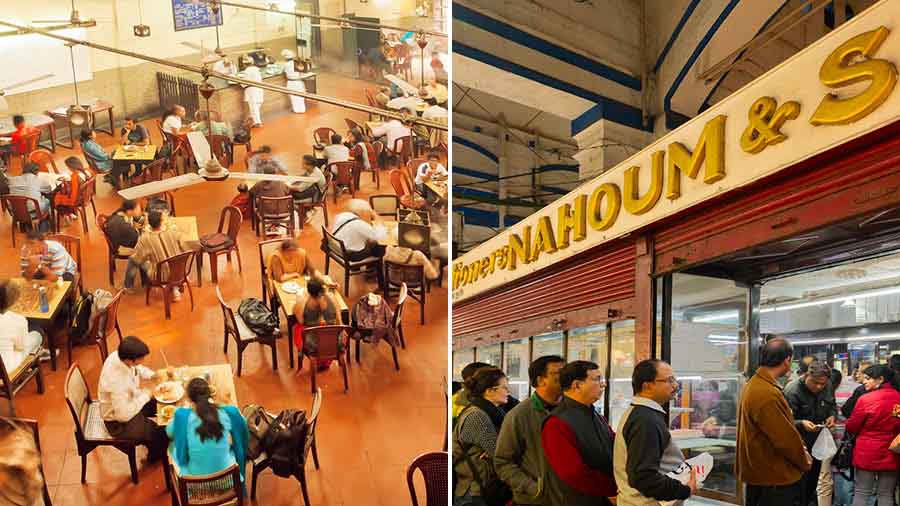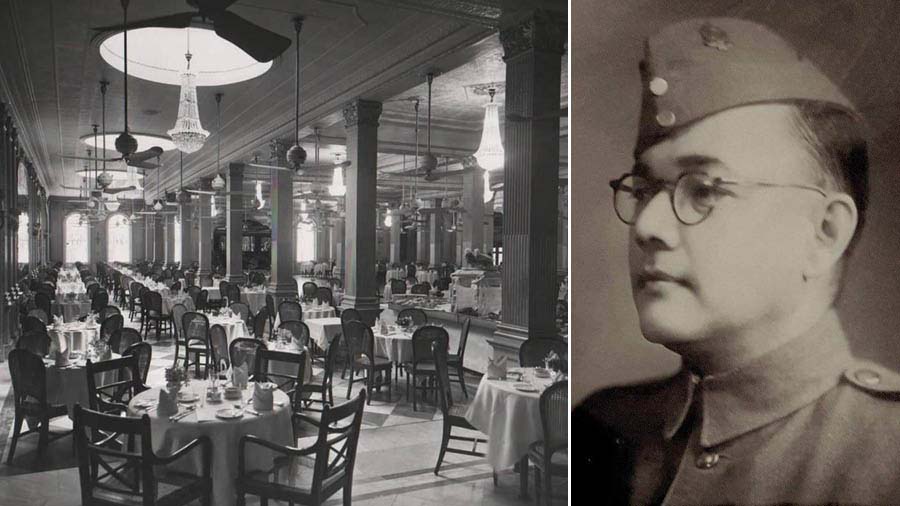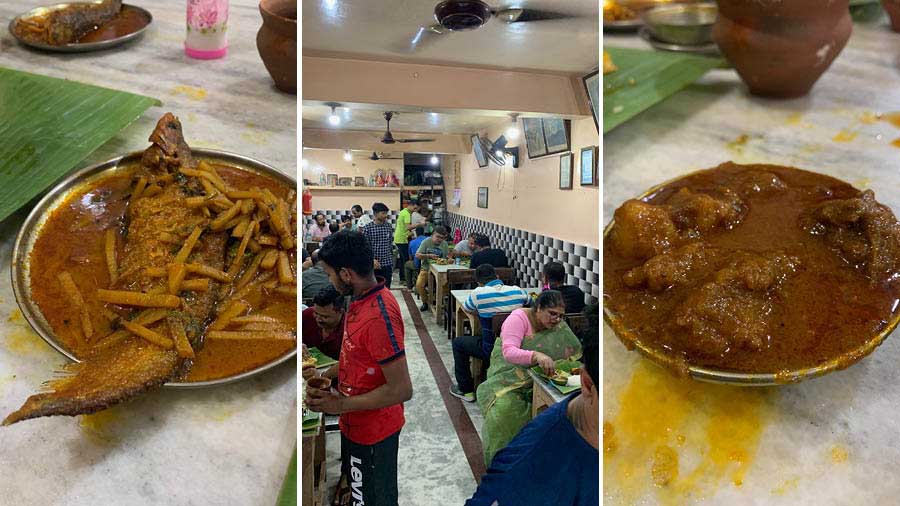Throughout its existence, Kolkata has been a hub of diverse eateries, catering to the cravings of food enthusiasts both in the present and in the years leading up to Independence. On the eve of 77th Independence Day, My Kolkata embarks on a nostalgic journey through the annals of time, revisiting eateries and quaint shops that graced Kolkata’s freedom fighters and several luminaries from the field of art and culture before 1947. These culinary landmarks continue to be the favourites among discerning palates, still enduring the test of time and exuding an old-world charm.
Savoring conversations at the Indian Coffee House

(L-R) An old photograph of Rabindranath Tagore, the entrance of the heritage eatery and a photograph of Kazi Nazrul Islam at the Indian Coffee House Suvendu Das
Nestled at 15 Bankim Chatterjee Street, just a stone’s throw away from the Presidency College, the Indian Coffee House has been more than just a coffee joint — it’s a hub of conversations and ideas. Originating from the legendary Albert Hall in 1876, this institution transitioned into the iconic Coffee House in 1947. Within these hallowed walls, the echoes of discussions on politics, sports, music, movies, and intellectual debates still reverberate. From Rabindranath Tagore to Satyajit Ray, this cherished coffee house has hosted film luminaries like Ritwik Ghatak, Mrinal Sen, authors like Sunil Gangopadhyay and Shakti Chattopadhyay, who shaped the cultural tapestry of Kolkata and beyond.
Paramount — a saga of sherbets and revolutionaries
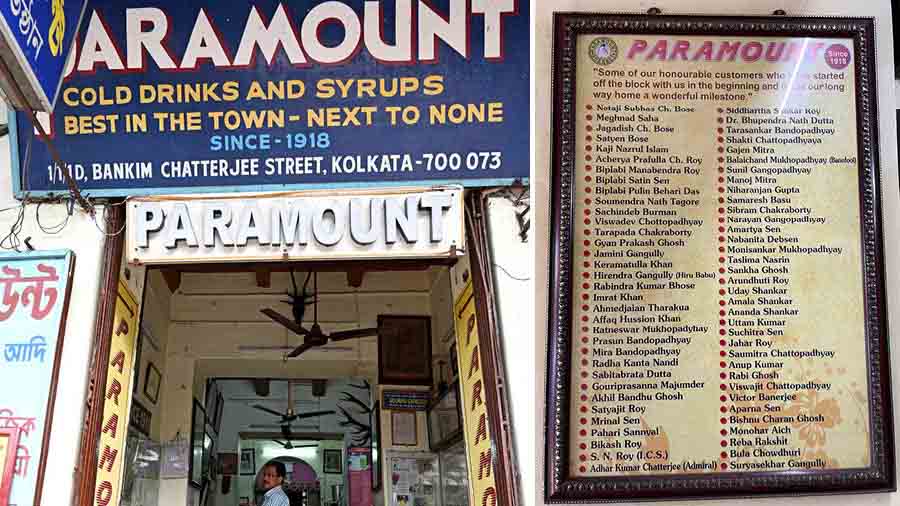
The entrance of the joint and (right) the names of noted personalities who visited there Amit Datta and Suvendu Das
In 1918, Nihar Ranjan Majumdar of Barisal (present day Bangladesh) embarked on a journey that would shape Kolkata's culinary landscape forever. What began as 'Paradise' later emerged as 'Paramount', a quintessential stop for sherbet connoisseurs. The place is still famous for its Daaber Sharbat and the green mango sherbet loved by Subhash Chandra Bose. It was Acharya Prafulla Chandra Sen who shared the recipe of Daaber Sharbat with Majumdar, who finally prepared it.
Paramount’s legacy was also intertwined with the freedom struggle. Revolutionaries like Subhash Chandra Bose, Pulin Behari Das, and Satin Sen frequented the premises, leaving an indelible mark on both the shop’s history and the nation’s. Majumdar himself was a member of the Barisal branch of Anushilan Samiti, a fitness club, which was actually used as an underground society for revolutionaries.
Kalpataru Bhandar — where tradition meets taste

The quaint paan shop in College Street, Kolkata Amit Datta
Since 1931, Kalpataru Bhandar has been dishing out flavourful Khili Paan, earning its place as Kolkata's oldest pan shop. The shop was established around 1931, at the time when Radha Binod Datta migrated to India from Bangladesh. Nestled in the heart of College Street, this establishment has been a haven for intellectuals and thinkers. Whether post-lunch or after a session of stimulating debates at the Coffee House, patrons have flocked to relish its paan. The shop is almost adjacent to the University Institute Hall where a lot of functions and programmes are organised. Adorned with photographs of luminaries like President Sarvepalli Radhakrishnan and Governor Padmaja Naidu, this paan shop is a living testament to Kolkata's cultural tapestry. There’s another photograph of the late singer Manna Dey with his note of appreciation. The late actor Bhanu Bandopadhyay was also a regular at the shop.
Girish Chandra Dey and Nakur Chandra Nandy: A sweet symphony
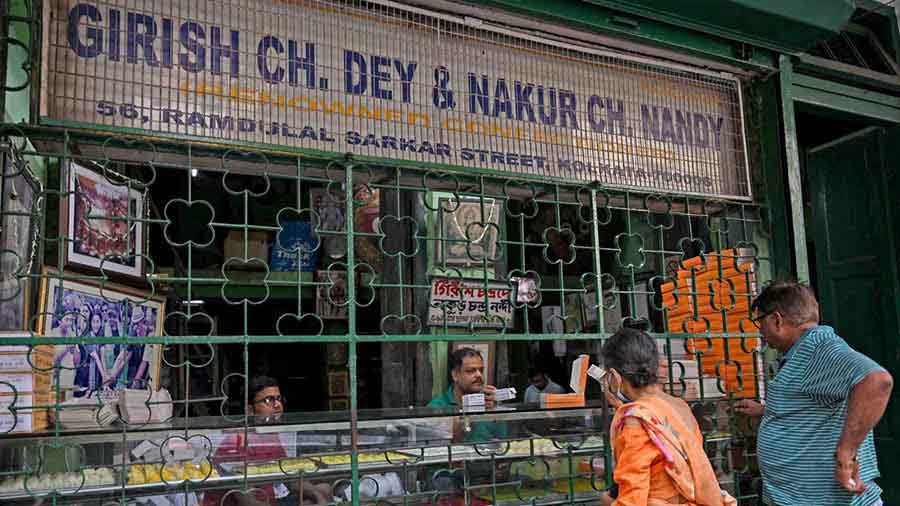
This shop regularly sent sweets to Thakurbari Amit Datta
Established in 1844, this sweet shop has churned out a delectable array of sweets that transcends time. A partnership between Girish Chandra Dey and his son-in-law Nakur Chandra Nandy, who came from Jonai, this establishment on 56 Ramdulal Sarkar Street (the lane beside Bethune College) has delighted mishti enthusiasts for generations. Presently overseeing the shop, Partho Nandy, the latest in the line of owners, shared, “Our shop used to regularly send sweets to Thakurbari. A devoted follower of Rishi Aurobindo would often take our confections for him.”
Nahoum & Sons: Crafting heritage through bakery delights

Nahoum & Sons was established in 1902 and many eminent personalities have frequented it since then Amit Datta
Established in 1902 by Nahoum Israel Mordecai, a Jewish entrepreneur, Nahoum and Sons stand as one of the city's oldest bakeries. Initially launched as a door-to-door service, the brand swiftly gained recognition for its baked delights. By 1916, the shop had gained such popularity that it found a permanent residence in New Market. Till date, the bakery’s distinctive Jewish aesthetic remains intact — a proof of its enduring heritage.
It’s not just the decor that has stood the test of time, the delectable products have too. You can indulge in an array of tempting treats that the shop proudly offers for an instant sugar rush. The bakery’s significance even touched the childhood of acclaimed filmmaker Satyajit Ray, who fondly recalled Mr. Nahoum’s visits to his place. Mr GC Haldar, who has been associated with the shop for more than 40 years, revealed that numerous eminent personalities have frequented its doors, a tradition that continues even today. Dr. Bidhan Chandra Roy too used to drop by quite often.
